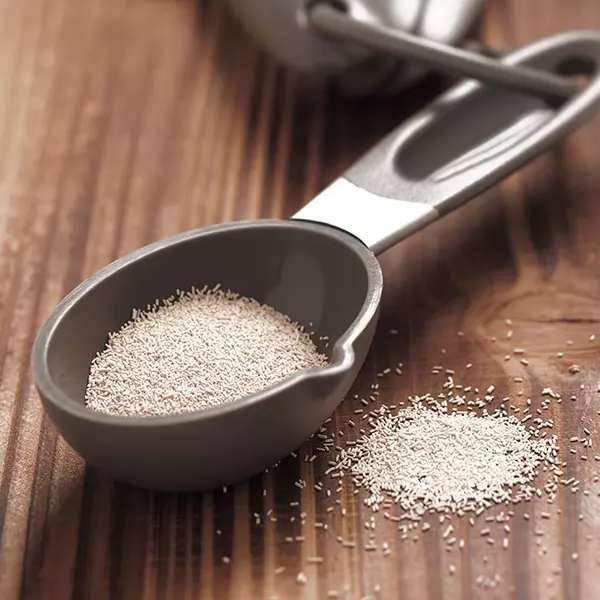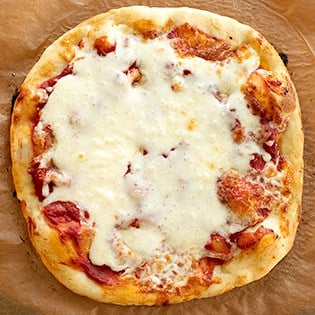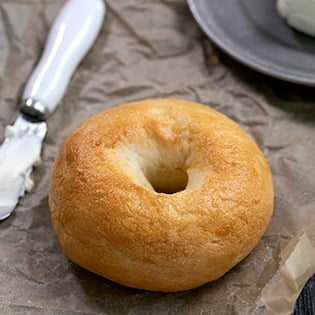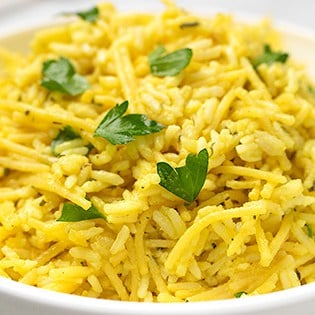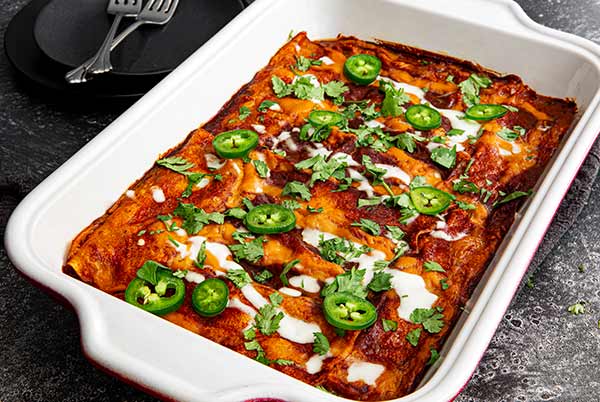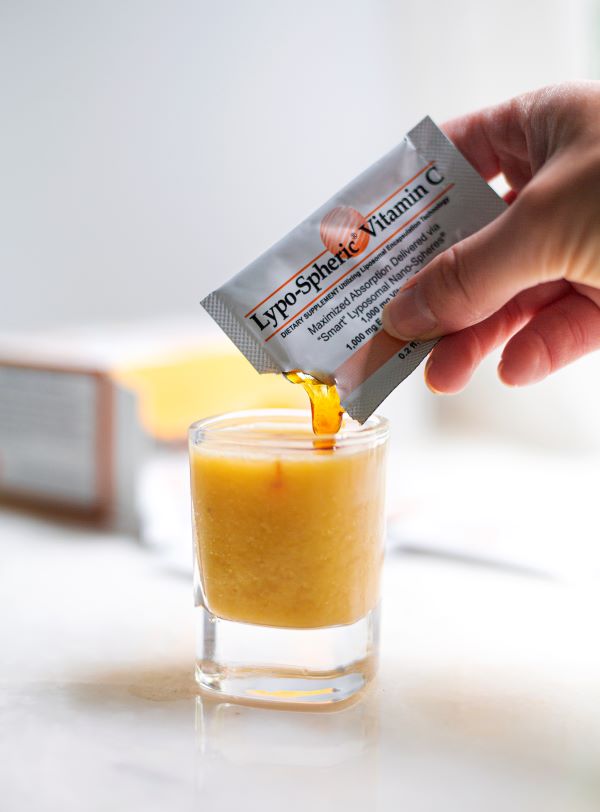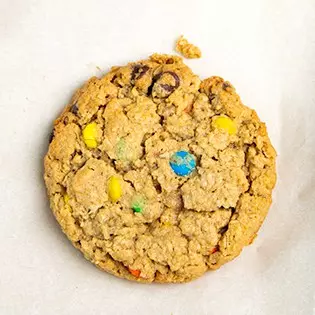Yes, as it is used in baking, most yeast is gluten free, and you’ll find it in many gluten-free products. But not everything that’s made with yeast, whether that’s active yeast, instant yeast, or another type of yeast, is gluten free.
Unless the yeast is certified gluten free, you can’t be certain it’s suitable for people with celiac disease or gluten intolerance. Let’s explore how you can safely enjoy yeast as part of a gluten free diet.
In a nutshell: Is yeast gluten free?
Yes, yeast itself is a single-celled organism and is naturally gluten free. However, cross-contamination with gluten-containing products during production or packaging can occur, so choosing certified gluten-free yeast is crucial if you have a gluten sensitivity or celiac disease.
What is yeast made from?
Yeast is a type of single-cell microorganism in the fungus family, and is available everywhere. There are hundreds of yeast species, but Saccharomyces cerevisiae is the most commonly used species in baking and brewing (each uses a different strain of that species of yeast, however). Yeast feeds on sugar and produces carbon dioxide and alcohol as byproducts, which contribute to the fermentation process in bread dough and alcoholic beverages.
What is yeast used for?
Yeast is primarily used in baking and in brewing. In baking, it helps dough rise by producing carbon dioxide, creating air pockets and giving bread a light, airy texture. Yeast is also essential in the beer brewing process as it ferments sugars to produce alcohol and carbonation in beer. Keep in mind that brewer’s yeast is almost never gluten free.

However, it’s important to remember that yeast allergies and sensitivities are not uncommon. Some individuals may experience adverse reactions to yeast, such as digestive discomfort, headaches, or skin rashes.
Yeast is gluten free and can be a nutritious addition for most people. However, if you suspect you have a yeast allergy or sensitivity, consult with a healthcare professional before incorporating yeast into your gluten free diet.
Are different types of yeast gluten free?
Most types of yeast are naturally gluten free, but the risk of cross-contamination varies depending on the type and brand. So make sure you go with a product that’s labeled gluten free.
What brands of baker’s yeast are gluten free?
Some trusted gluten free yeast brands include:
- Bob’s Red Mill active dry yeast (labeled gluten free)
- Fleischmann’s yeast (although their website does not make a gluten free claim, the company has stated that everything but their yeast-containing baking mixes are gluten free)
- Red Star instant yeast (owned by SAF or LeSaffre; be mindful that their Platinum, Platinum Instant Sourdough, and Organic Instant Yeasts are not gluten free)
What foods contain yeast?
Yeast is a versatile ingredient used in a variety of food products. It plays a crucial role in fermentation and leavening, giving certain foods their unique textures and flavors. Here are some foods that commonly contain yeast. Please note that not all of them are gluten free:
- Baked goods: Yeast is an essential ingredient in many baked goods, including bread, pizza dough, pastries, croissants, cinnamon rolls, and some crackers. When yeast is activated under the right conditions, it creates rise and contributes to the fluffy, airy texture of these baked goods.
- Fermented beverages: All alcoholic beverages, like beer, wine, and some ciders, rely on brewer’s yeast for fermentation (which is usually not gluten free). The yeast converts sugars into a lot of alcohol and some carbon dioxide, creating the desired flavor and carbonation.
- Fermented foods: Some fermented foods, such as sourdough bread, kefir, and certain types of cheese, involve yeast in their production. In these cases, yeast contributes to both the fermentation process and the unique flavor profiles of the products.
- Food additives and flavorings: Yeast extract and autolyzed yeast are often used as flavor enhancers in various processed foods, such as soups, sauces, snack foods, and ready-made meals. They provide a savory, umami flavor, but are usually made from barley and are not gluten free.
- Vinegar: Vinegar is produced through a fermentation process that involves yeast. The yeast feeds on sugar or starch, producing alcohol, which is then exposed to oxygen and acetic acid, and allowed to ferment into vinegar.
- Nutritional supplements: Nutritional yeast (gluten free) and brewer’s yeast (almost never gluten free) are used as dietary supplements, particularly for vegetarians and vegans, due to their high levels of B vitamins, protein, and minerals.
- Meat substitutes: Yeast-derived ingredients, such as yeast extract or autolyzed yeast, are sometimes used to produce meat substitutes, like veggie burgers or plant-based sausages, to enhance their flavor and texture.
Is yeast gluten free? Cross-contamination risks
Cross-contamination during the manufacturing and processing of even gluten free forms of yeast is a significant concern for individuals with gluten sensitivities or celiac disease. Therefore, it’s crucial to be aware of the potential risks and take appropriate precautions to ensure that the yeast you consume is safe and gluten free.
When choosing yeast products, go for those specifically labeled gluten free, as these have been tested and verified to contain minimal gluten levels. Plus, of course, it’s essential to practice safe handling and storing yeast at home to minimize the risk of cross-contamination further. Some tips include:
- Store gluten free yeast separately from gluten-containing products in your pantry, using dedicated containers or designated shelves to prevent accidental mixing.
- Use separate utensils and appliances, such as mixing bowls, spoons, and measuring cups, exclusively for preparing gluten free recipes.
- Thoroughly clean surfaces, cutting boards, and appliances before preparing gluten free foods to remove any traces of gluten-containing ingredients.
- Or, don’t take any chances: don’t have any gluten in your house so that you minimize, if not eliminate, the chance of any kind of gluten exposure.
Gluten free yeast recipes
Thankfully, it’s easier than ever to find gluten free products, but you still can’t beat homemade gluten free breads and other treats. As you know, I have a fondness for baking gluten free bread, and many of these breads have yeast.
But not all of my yeasted recipes are for a loaf of gluten free bread. Enjoy various forms of gluten free yeast as part of your gluten free diet with a variety of recipes, from yeasted breads to vegetarian and vegan foods like rice-a-roni and our gf vegan Alfredo pasta.
A basic recipe for gluten free pizza dough is one of the single most important staples to have in your kitchen. And it’s so simple to make, as long as you have baker’s yeast on hand!
These plain gluten free bagels have the authentic chew inside, and thin, crisp shell of a real, boiled bagel.
Cheesy nutritional yeast makes this recipe for homemade gluten free Rice A Roni recipe taste rich and complex. Enjoy it as a gluten free side dish or main course.
FAQ
How should you store yeast?
To maintain the freshness and potency of yeast, store it in a cool, dry place, away from direct sunlight. Unopened yeast can be stored in a pantry or cupboard, while opened yeast should be kept in an airtight container in the refrigerator to prolong its shelf life.
What substitutes are available for yeast?
If you can’t use yeast or prefer not to, there are no substitutes that can be used in yeasted recipes on a 1 to 1 basis. There are, however, several alternative ways to achieve a similar baked good to yeasted baked goods. Be sure to only use recipes that are developed to be made with these leaveners:
Baking powder: Suitable for quick breads and pancakes, and even my recipe for yeast-free gluten free sandwich bread, baking powder acts as a leavening agent without the need for fermentation. You can also make gluten free yeast free dinner rolls with a chemical leavener like baking powder.
Baking soda and acid: Combining baking soda with an acidic ingredient like vinegar, lemon juice, or buttermilk can create a leavening effect in baked goods.
Wild yeast sourdough starter: A natural leavening agent made from flour and water, sourdough starter can be used as an alternative to yeast in bread making.
Is Baker’s yeast gluten free?
Baker’s yeast (whether instant yeast or active dry yeast) is typically gluten free, but always check the label and/or choose a certified gluten free product to ensure no cross-contamination has occurred.
Is Brewer’s yeast gluten free?
Brewer’s yeast is a slow-rising form of yeast that is used in beer production, since it gives off carbon dioxide, like baker’s yeast, but also large amounts of alcohol. Brewer’s yeast may contain trace amounts of gluten from the gluten-containing grains (usually barley and/or wheat) used in brewing.
Is active dry yeast gluten free?
Active dry yeast, a form of baker’s yeast, is typically gluten free, but it’s crucial to check the label and choose a certified gluten free product to ensure no cross-contamination has occurred.
Is instant yeast gluten free?
Instant yeast, a form of baker’s yeast, is generally gluten free, but make sure to choose a certified gluten free product to avoid cross-contamination.
Is yeast extract gluten free? Is autolyzed yeast gluten free?
Yeast extract is gluten free only if it is made gluten free grains. If it is made from barley, as it typically is, it is not gluten free, whether it is autolyzed yeast extract or not. Autolyzed yeast extract is typically not gluten free since it is usually made from barley, a gluten-containing grain. Yeast extracts are flavoring agents made from yeast that are used to enhance the flavors in foods, similar to MSG.
Is nutritional yeast gluten free?
Yes, nutritional yeast is made from deactivated yeast, and is naturally gluten free. It’s very flavorful and is useful in our gluten free chicken tenders and homemade bouillon powder.
